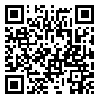دوره 15، شماره 4 - ( 7-1404 )
جلد 15 شماره 4 صفحات 0-0 |
برگشت به فهرست نسخه ها
Download citation:
BibTeX | RIS | EndNote | Medlars | ProCite | Reference Manager | RefWorks
Send citation to:



BibTeX | RIS | EndNote | Medlars | ProCite | Reference Manager | RefWorks
Send citation to:
Abbaslou H, Alboghobeish A, Seyed Quresh S, Alaei Z, Safari M, Izadi N et al . Association of Digital Device Use with Computer Vision Syndrome and Sleep Quality among Administrative Staff in an Iranian University. PTJ 2025; 15 (4)
URL: http://ptj.uswr.ac.ir/article-1-664-fa.html
URL: http://ptj.uswr.ac.ir/article-1-664-fa.html
Association of Digital Device Use with Computer Vision Syndrome and Sleep Quality among Administrative Staff in an Iranian University. فصلنامه فیزیک درمانی. 1404; 15 (4)
چکیده: (78 مشاهده)
Purpose: This study aimed to investigate the prevalence and associated factors of CVS and sleep quality among administrative staff at an Iranian university.
Methods: This cross-sectional study involving 299 administrative staff members utilized the Pittsburgh Sleep Quality Index and CVS questionnaires to assess sleep quality and CVS symptoms. Employees with a minimum of one year of experience and no history of musculoskeletal disorders were included in the study. Statistical analysis, including chi-square, Mann-Whitney, and t-tests, was conducted to explore the relationships between CVS, sleep quality, demographic variables, and occupational characteristics. Regression analysis was performed to evaluate the associations between CVS, sleep quality, and monitor use risk factors, using SPSS version 26 for data analysis.
Results: The study found that 28.1% of participants had CVS symptoms, while 79% reported poor sleep quality. Increased age and longer work experience, along with glasses use, protected against CVS (P value < 0.001). Inadequate sleep quality, defined by a PSQI score of 6 or above, was associated with gender, smoking, lack of breaks, and the use of external monitors (P < 0.05). Workplace monitor use increased CVS probability by 2.52 times (95% CI: 1.534–4.141), while external monitors showed a protective effect. Greater monitor usage correlated with poor sleep quality, but this association was not statistically significant (odds ratio 1.140, 95% CI: 0.753–1.726).
Conclusions: The findings of present study highlight the high prevalence of CVS among monitor users and the significant impact of poor sleep quality on employees. Thus, the study found that CVS and poor sleep quality show a similar pattern in relation to excessive screen time, with both being negatively impacted as screen exposure increases. Prolonged monitor use has implications for both vision syndrome and sleep quality, potentially affecting overall well-being and work performance. Implementation of preventive measures is crucial to mitigate symptoms and enhance occupational safety and health.
Methods: This cross-sectional study involving 299 administrative staff members utilized the Pittsburgh Sleep Quality Index and CVS questionnaires to assess sleep quality and CVS symptoms. Employees with a minimum of one year of experience and no history of musculoskeletal disorders were included in the study. Statistical analysis, including chi-square, Mann-Whitney, and t-tests, was conducted to explore the relationships between CVS, sleep quality, demographic variables, and occupational characteristics. Regression analysis was performed to evaluate the associations between CVS, sleep quality, and monitor use risk factors, using SPSS version 26 for data analysis.
Results: The study found that 28.1% of participants had CVS symptoms, while 79% reported poor sleep quality. Increased age and longer work experience, along with glasses use, protected against CVS (P value < 0.001). Inadequate sleep quality, defined by a PSQI score of 6 or above, was associated with gender, smoking, lack of breaks, and the use of external monitors (P < 0.05). Workplace monitor use increased CVS probability by 2.52 times (95% CI: 1.534–4.141), while external monitors showed a protective effect. Greater monitor usage correlated with poor sleep quality, but this association was not statistically significant (odds ratio 1.140, 95% CI: 0.753–1.726).
Conclusions: The findings of present study highlight the high prevalence of CVS among monitor users and the significant impact of poor sleep quality on employees. Thus, the study found that CVS and poor sleep quality show a similar pattern in relation to excessive screen time, with both being negatively impacted as screen exposure increases. Prolonged monitor use has implications for both vision syndrome and sleep quality, potentially affecting overall well-being and work performance. Implementation of preventive measures is crucial to mitigate symptoms and enhance occupational safety and health.
| بازنشر اطلاعات | |
 |
این مقاله تحت شرایط Creative Commons Attribution-NonCommercial 4.0 International License قابل بازنشر است. |


